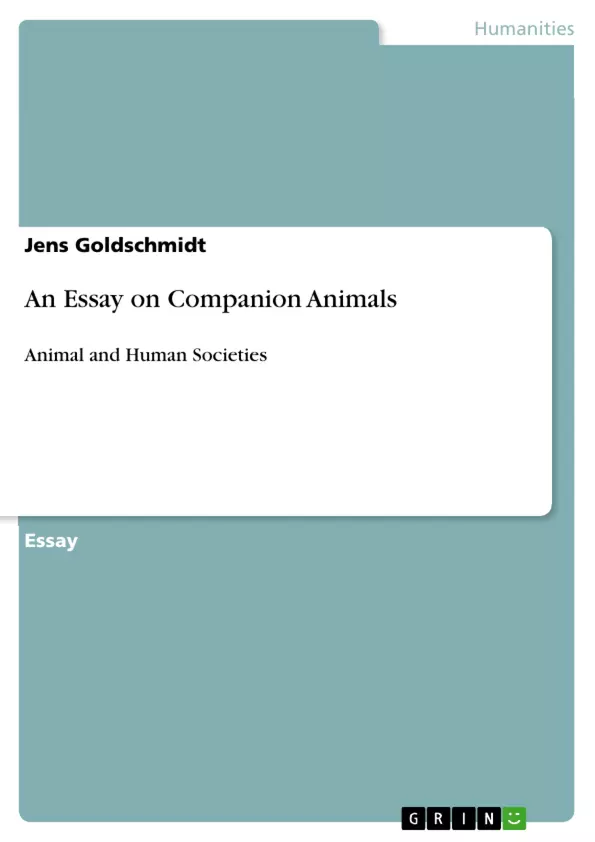Essay
Today, owning a pet is a widespread phenomenon. At the same time, humans have diverse reasons for keeping pets. The following essay is about companion animals and it consists of three parts. At first I will illustrate the benefits and drawbacks for both the human owners and the companion animals themselves. The second part will be
about state regulation of pet ownership. It will be discussed, if more or less regulation is desirable or not. Thirdly, I will elaborate on the question whether the world would be a better place if the practice of keeping animals as pets was outlawed.
The main goal of my essay will be to have a closer look at the human-petrelationship nowadays. However, I will make some remarks on the keeping of animals in a historical context at first.
In different cultures all over the world, keeping pets has been a common phenomenon in the history of mankind. James Serpell (1989) found that in Australia the Aborigines kept dingoes, wallabies, possums, bandicoots, rats, cassowaries or even frogs as pets, in Southeast Asia indigenous groups kept dogs, cats, pigs, monkeys and various birds. The Indians of North America kept deer, moose, bisons, racoons, wolves, dogs, bears, turkeys, hawks, crows and a variety of other small wild mammals and birds. In general, one can see that so-called "indigenous" peoples have always kept animals ac-
tively. For example, the Brazilian Kalapalo Indians were interested in taming their animals. The relationship to their pets can be defined as filiative or like that of parents and their children. Furthermore, Kalapalos never killed or ate their pets. In other cultures, like in some of the "red races" in North America, it was even common for women to bring up bears by giving them milk from their own breasts. Later on, even in cultures like the Indians of the Canadian Arctic, where dogs were normally treated as working
animals, childless individuals and couples occasionally adopted a puppy into their household to satisfy their social and material needs (Serpell, 1989).
Although this was just a short glimpse on history, one can see that people did not always treat their animals with cruelty or kept them to produce food.
[...]
- Citation du texte
- Jens Goldschmidt (Auteur), 2009, An Essay on Companion Animals, Munich, GRIN Verlag, https://www.grin.com/document/177053



